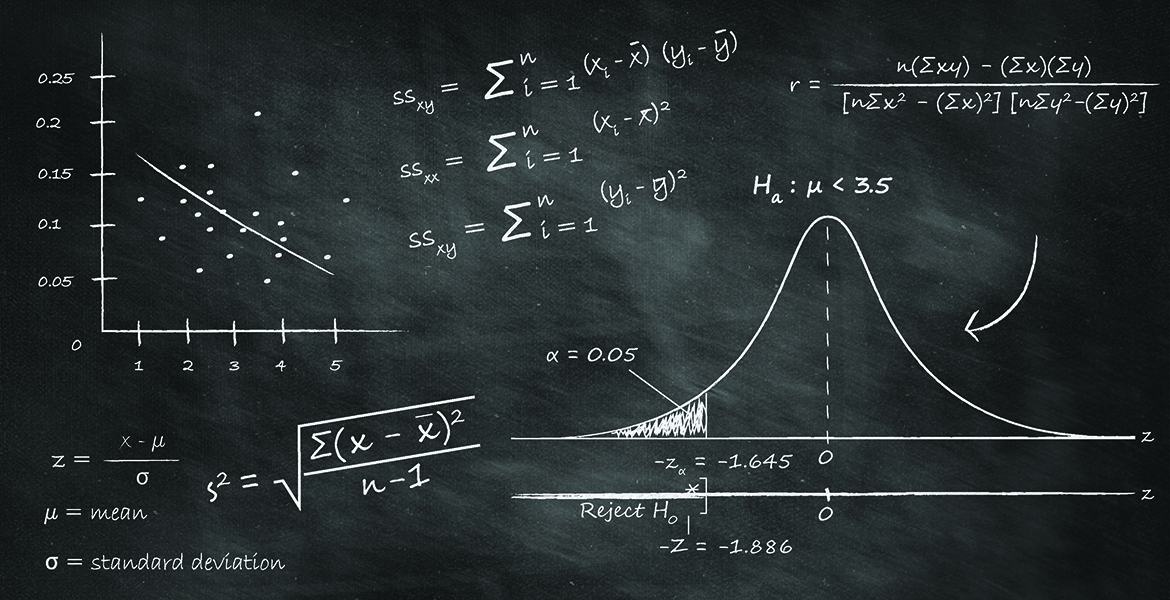
This course introduces students to the basic ideas of probability (combinatorial analysis and axioms of probability), conditional probability and independence, probability distributions and provides introductions to the handling data using descriptive statistics. The course uses R software package to clarify and illustrate theoretical concepts of probability, to show how random variables are generated and how they vary, to know how to construct appropriate diagrams for data summary.
Syllabus
Descriptive statistics:
Data collection and summary. Stem/leaf plots and histograms. Measures of location (Mode, median, mean).
Measures of spread. Quartiles. Box plots. Variance and standard deviation. Transformations.
Probability:
Relative frequency. Probability as a limit. Events. Union and intersection. Addition rule. Exclusive events. Independent events. Multiplication rule.
Permutations and combinations.
Conditional probability. Total probability theorem, Bayes' theorem.
Discrete probability distributions:
Discrete random variables. Probability distributions. Expectation. Algebra of expectations.
Variance. Bernoulli distribution. Binomial distribution (sampling with replacement).
Mean and variance of Bernoulli and binomial.
Poisson distribution (and applications).
Derivation of the Poisson. Approximation to the binomial.
Continuous probability distributions:
Density function as limit of histograms. Properties of probability density function (pdf). Cumulative distribution function (cdf). Uniform and exponential distribution. Expectations. Variance. Median, mode. Distributions of functions of random variables; change of variables formula.
Normal distribution. Use of tables. Central limit theorem. Additivity.
Moment generating function;
On completion of the course students should be able to:
- understand how to calculate and interpret simple summary statistics;
- how to choose and construct appropriate diagrams to illustrate data sets;
- use R for the data analysis examples of the course;
- understand and apply the addition rule and multiplication rule of probability;
- understand the basic ideas of conditional probability including the application of the total probability theorem and Bayes' theorem;
- understand and recognise situations appropriate for Binomial and Poisson models;
- calculate expectations and variances for discrete and continuous random variables, understand the ideas of probability density function and the distribution function;
- understand the change of variables formula and know how to calculate the distributions of functions of random variables
- understand moment generating functions
- recognise the central role of the normal distribution, be able to reduce normal random variables to standard form and be able to use tables of normal probabilities;
- understand the basic ideas of central limit theorem.
- Module Supervisor: Yassir Rabhi